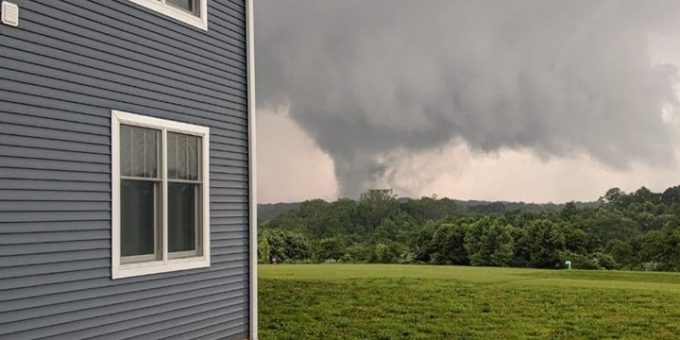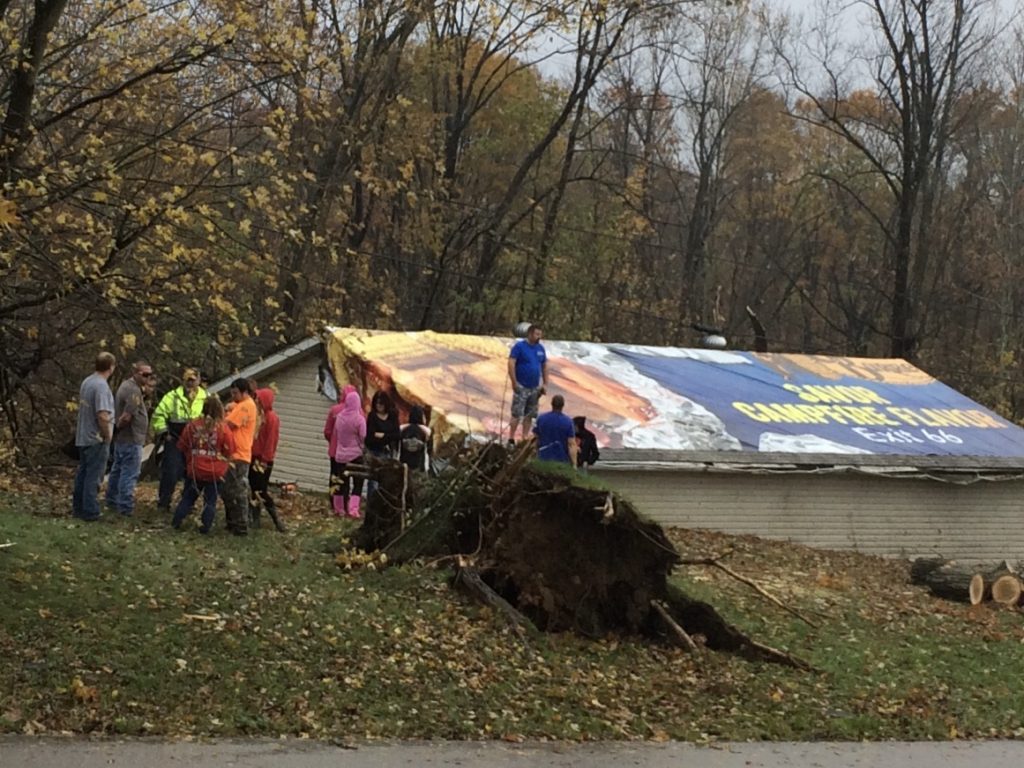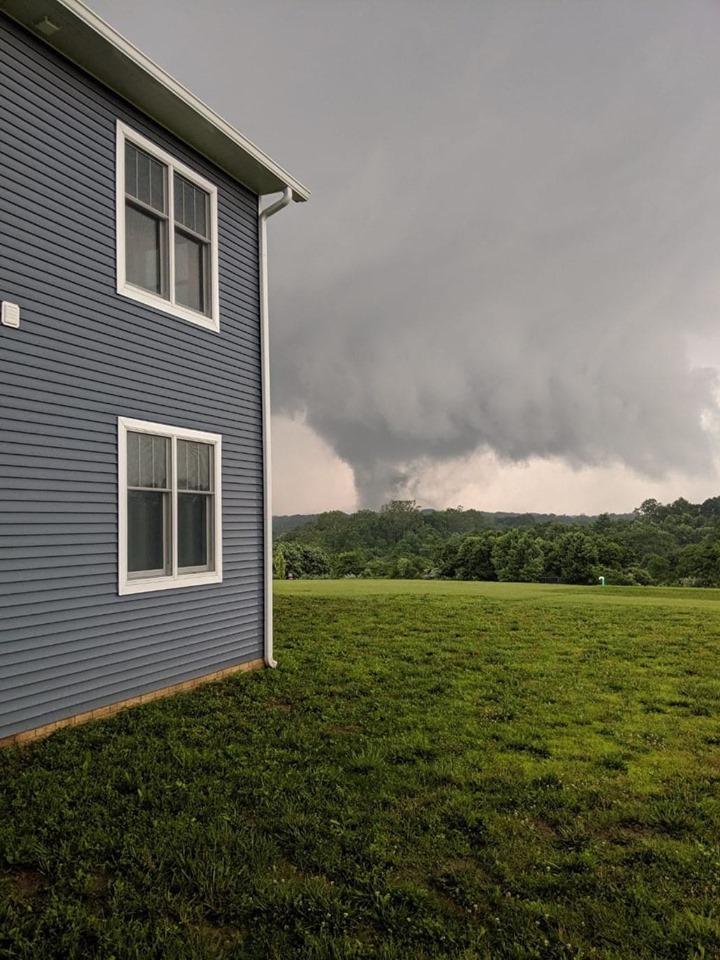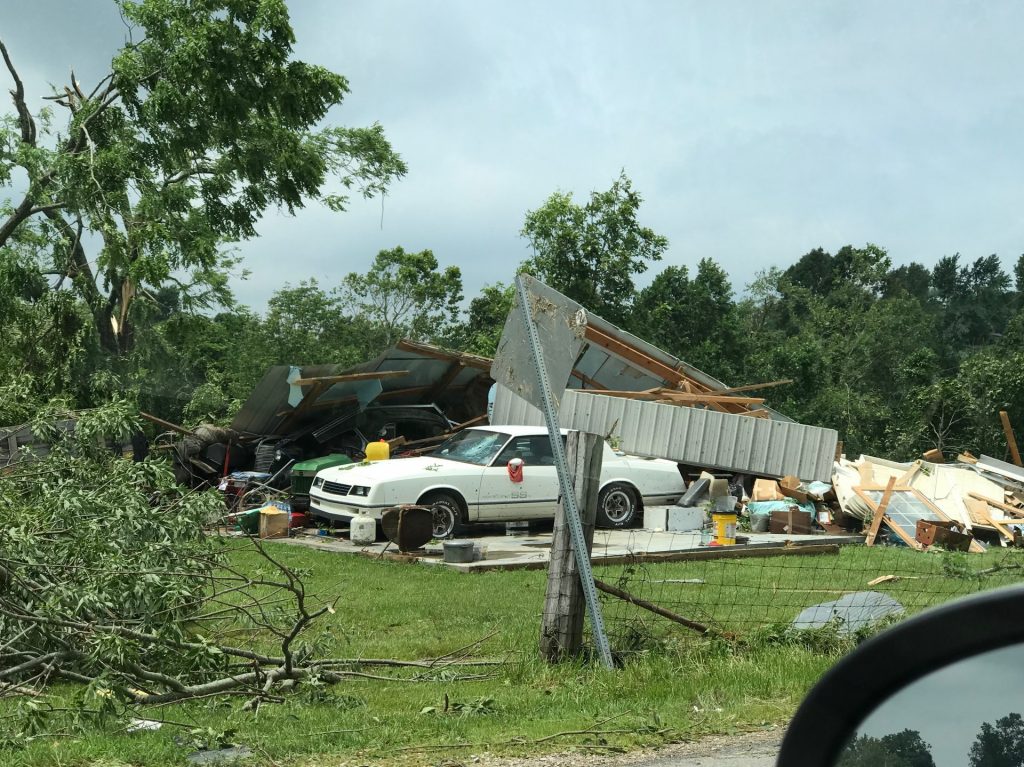
(LAWRENCE CO.) – According to the National Weather Service, there have been 24 tornadoes that have hit Lawrence County since 1955.
One person was killed, 58 people were injured and the damage estimates were more than $32 million.

Tornadoes have been more prevalent in the area over the last several years. Here is a list of the tornadoes for Lawrence County since June 2, 1990.
- On June 2, 1990, an EF-4 Tornado hit killing one small child and injuring 51 others. The damage was estimated at $2.5 million.
- On April 15, 1994, an EF-1 Tornado hit in the Bryantsville and Mitchell areas injuring 5 people. The damage was estimated at more than half-million dollars.
- On April 19, 1994, an EF-0 Tornado hit Bedford. There were no injuries. The damage was estimated at around $100,000 in damage.
- On October 24, 2001, an EF-1 Tornado hit the Williams area. There were no injuries. The damage was estimated at around $10,000.
- On November 15, 2005, an EF-1 Tornado hit the Coveyville area. There were no injuries. The damage was estimated at around $50,000.
- On April 2, 2006, an EF-1 Tornado hit the Mitchell area. There were no injuries. The damage was estimated at around $100,000.
- On June 3, 2008, an EF-1 Tornado hit the Popcorn area. There were no injures. The damage was estimated at more than $120,000.
- On May 3, 2009, an EF-3 Tornado hit Fayetteville, and an EF-0 Tornado hit Bedford. Two people were injured. The damage was estimated at more than half-million dollars.
- On May 25, 2011, an EF-3 Tornado hit in the Erie area, and an EF-0 Tornado hit the Huron area. No injuries reported, causing $165,000 in damages.
- On November 17, 2013, an EF-1 Tornado hit in the Bedford area. No injuries were reported. The damage was estimated at $70,000.
- On March 1, 2017. an EF-1 Tornado hit Mitchell and an EF-2 hit in the Huron area. No injuries were reported. The damage was estimated at more than $220,000.
- On November 5, 2017, an EF-1 Tornado hit the Springville area. No injuries were reported. The damage was estimated at $125,000.
Last year, An EF-1 touched down on March 14, 2019, north of Brownstown on County Road 25 East causing damage to a home, and several farm buildings, as well as toppling over an irrigation system. This same tornado also damaged Turner Construction on State Road 446, near U.S. 50 East.
An EF-0 tornado also touched down the same day, north of Salem, causing damages to buildings. No one was injured.

On June 16, 2019, two EF -2 tornadoes hit the Eastern Greene County area and Ellettsville in Monroe County. More than 30 homes were damaged in the northern part of Monroe County from the tornado. There was widespread damage from Raines Road in Eastern Greene County to Monroe County.
Tornadoes can strike at any time, day or night, and any time of the year – if conditions are right. According to Valerie Luchauer, Lawrence County Emergency Management Director, local governments are moving away from outside warning systems for tornadoes and focusing on getting residents to purchase weather alert radios that are inexpensive, and not as costly to maintain.
“The weather radios are only $49 and even some fire departments offer the weather radios for free for those who are low-income or disabled,” added Luchauer. “The outside weather sirens are only good for individuals who are normally outside the time they go off. And people are normally sleeping, or inside their home, at night and may not hear the sirens go off. The weather radios provide a much better way of alerting homeowners.”

This year’s Statewide Tornado Drill will be conducted on Wednesday, March 18th when local, county and state officials will test the weather alerting systems and emergency notification systems to make sure they are working properly.
Now is the time residents need to start planning for and making sure their home emergency kits are stocked and ready to go in the event of a Severe Weather Emergency.
Here are some recommendations from the American Red Cross:
Right Before a Tornado
Don’t wait until you see the tornado to act! If you do nothing else:
- Listen to local area radio, NOAA radio or TV stations for the latest information and updates.
- Move to an underground shelter, basement or safe room. If none is available, a small, windowless interior room or hallway on the lowest level of a sturdy building is the safest alternative.
- Remember – no area of a mobile home is safe during a tornado. If you have access to a sturdy shelter or a vehicle, go there immediately, using your seat belt if driving.
- Find a local emergency shelter and know the best routes to get there if you need to.
During a Tornado
If You Are Outdoors
- Seek shelter in a basement, shelter or sturdy building.
- If you cannot quickly walk to a shelter, immediately get into a vehicle and try to drive to the closest sturdy shelter. Remember to buckle your seat belt.
- Stay away from bridge/highway overpasses.
- If strong winds and flying debris occurs while driving, pull over and park, keeping your seat belt on and engine running. Put your head down below the windows, covering your head with your hands and a blanket.
After a Tornado
If you do nothing else:
- Let friends and family know you’re safe. – Register yourself as safe on the Safe and Well website
- If evacuated, return only when authorities say it is safe to do so.
- Continue listening to local news or an NOAA Weather Radio for updated information and instructions.
- Check for injuries. If you are trained, provide first aid to persons in need until emergency responders arrive.
What Do You Need In A Survival Kit?
At a minimum, you should have the basic supplies listed below:
- Water: one gallon per person, per day (3-day supply for evacuation, 2-week supply for home)
- Food: non-perishable, easy-to-prepare items (3-day supply for evacuation, 2-week supply for home)
- Flashlight
- Battery-powered or hand-crank radio (NOAA Weather Radio, if possible)
- Extra batteries (Similar item available in the Red Cross Store)
- Deluxe family first aid kit
- Medications (7-day supply) and medical items
- Multi-purpose tool
- Sanitation and personal hygiene items
- Copies of personal documents (medication list and pertinent medical information, proof of address, deed/lease to home, passports, birth certificates, insurance policies)
- Cell phone with chargers (Similar item available in the Red Cross Store)
- Family and emergency contact information
- Extra cash
- Emergency blanket
- Map(s) of the area
Consider the needs of all family members and add supplies to your kit:
- Medical supplies (hearing aids with extra batteries, glasses, contact lenses, syringes, etc)
- Baby supplies (bottles, formula, baby food, diapers)
- Games and activities for children
- Pet supplies (collar, leash, ID, food, carrier, bowl)
- Two-way radios
- Extra set of car keys and house keys
- Manual can opener
The National Weather Service will conduct Skywarn Spotter Training in Lawrence County.
The training will take place on Thursday, March 19th from 6 p.m. until 8 p.m. at the Oolitic Baptist Church Education Building next to the church at 709 Lafayette Avenue in Oolitic.
If you have any questions you can contact your local emergency management office or American Red Cross for additional information on preparing for a disaster.



